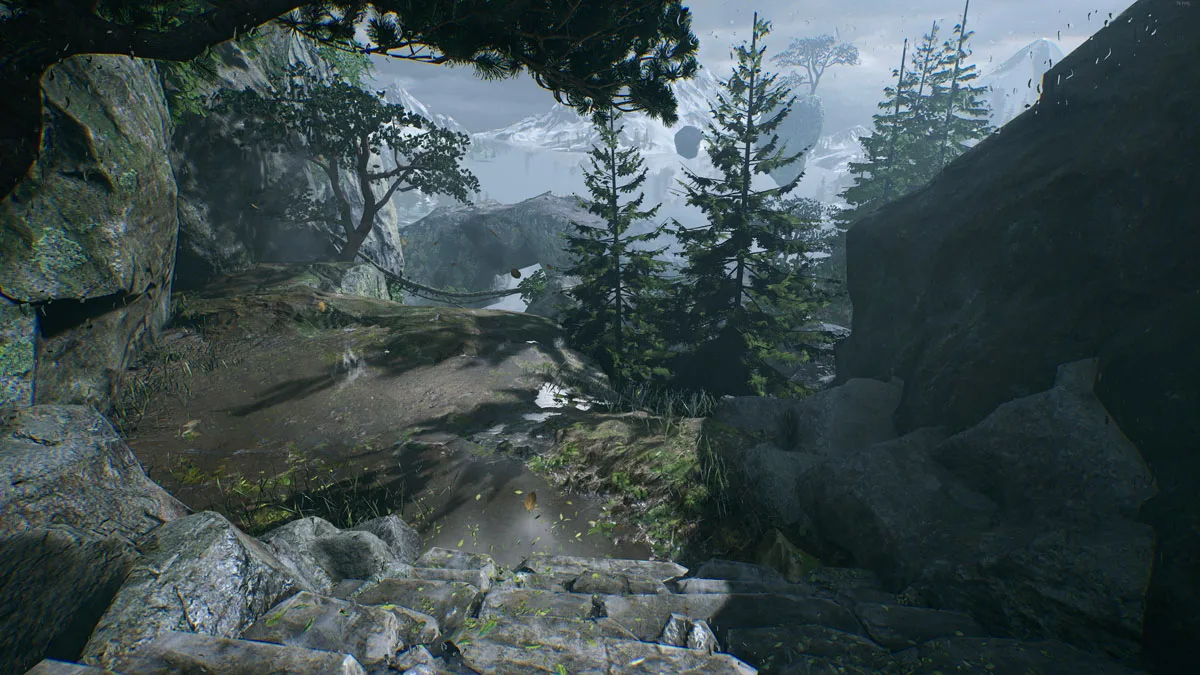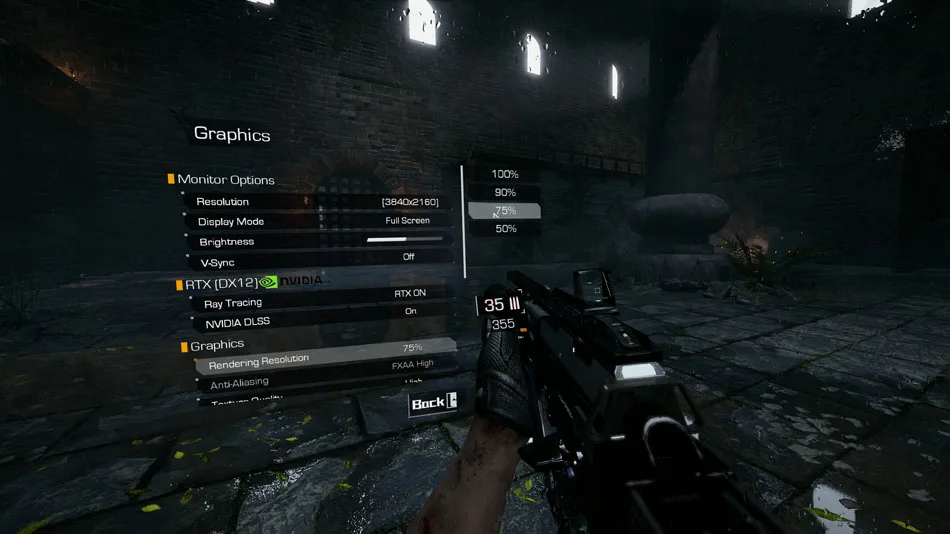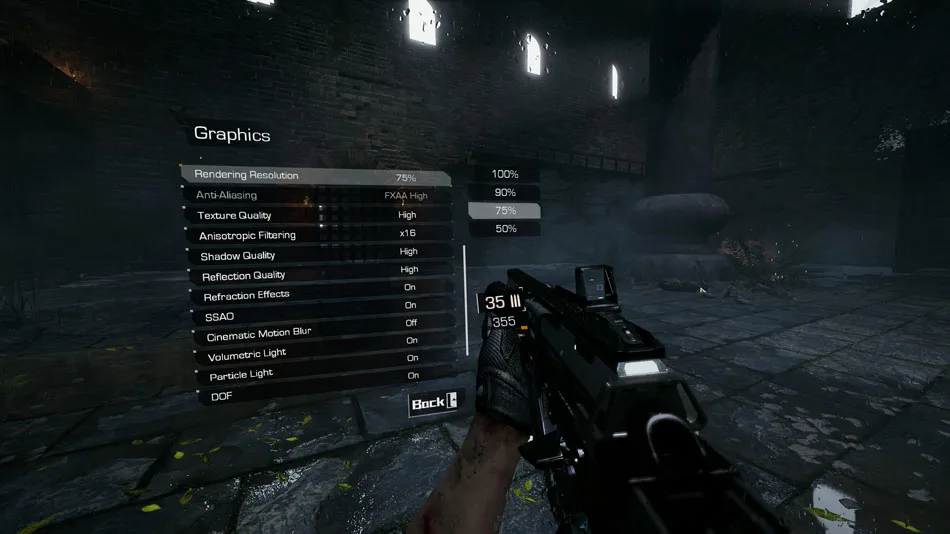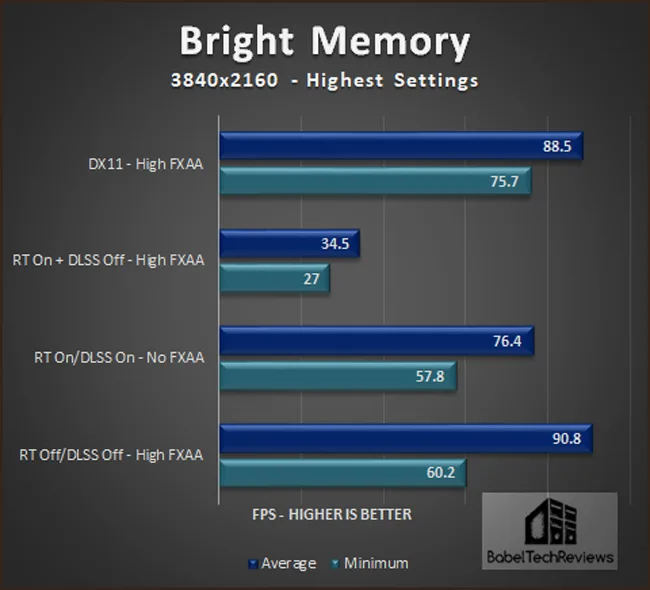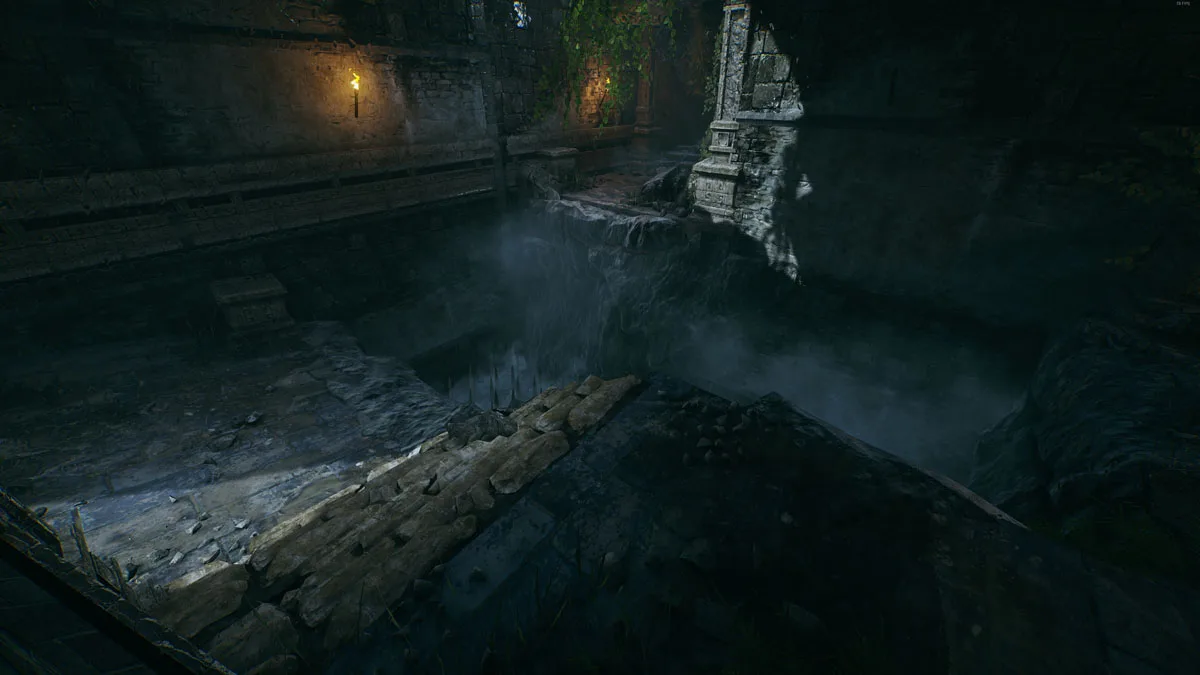Indie Ray Traced Games, Part 2 – the ‘Bright Memory’ RTX Performance/Image Quality Review UPDATED with Dev Interview
UPDATE: 14 April 2020 6:30 AM PDT. BTR has heard from the Bright Memory developer and we have updated this review with an exclusive interview.
Eighteen months ago, NVIDIA introduced realtime RTX ray tracing, and currently there are six AAA games that support it. However, BTR’s indie ray tracing series will cover the image quality (IQ) and performance of the four small studio games that have implemented it so far, continuing with Bright Memory, an indie game with amazing visuals built using Unreal Engine 4.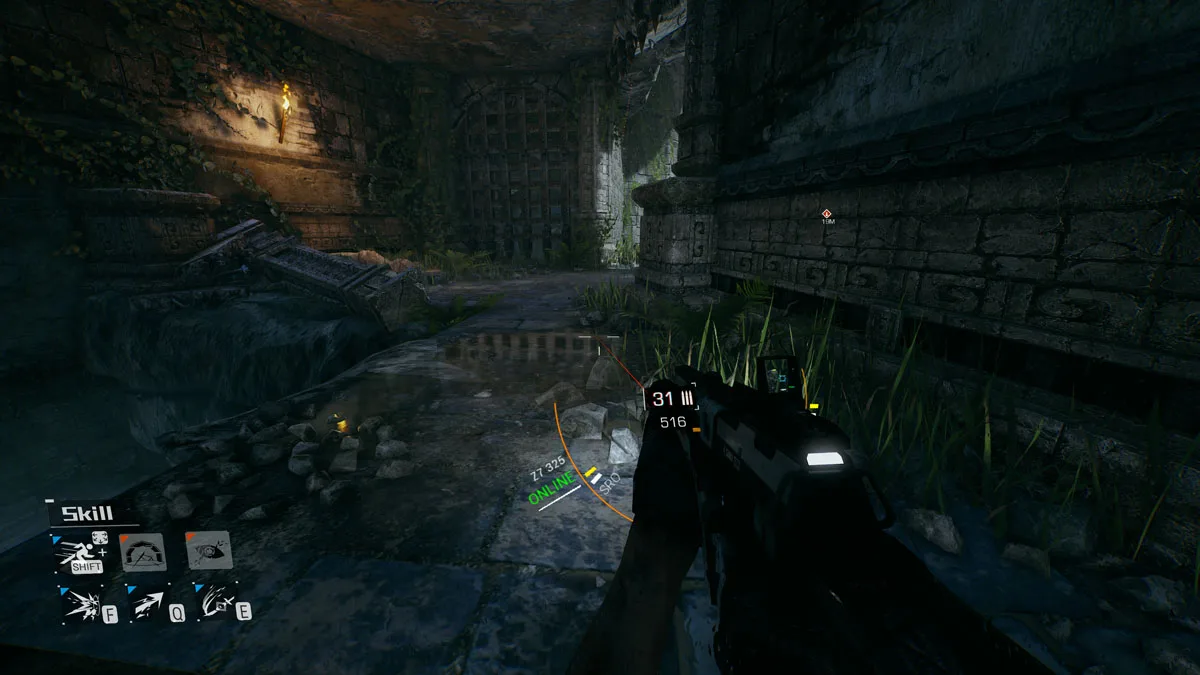
BabelTechReviews purchased a copy of Bright Memory from Steam while it was in Early Access for $6.99, and we began playing it using a RTX 2080 Ti. Once we started playing, we were hooked by its intense gameplay and exciting fast-paced first player shooter elements that successfully combine running-and-gunning with swordplay slashing, acrobatic combos involving flash bangs, stopping time, plus grappling, and lifting enemies into the air. We played all the way through the game in a single 1 hour setting. But we didn’t stop there.
We replayed the game two more times to get more XP and to max out the powerups. Each time Bright Memory is replayed, it gets easier and the boss battles become less demanding although no less intense. We then replayed it one more time after it left early access with improved IQ and performance with DLSS 2.0 to find the perfect location for benchmarking. Bright Memory is one of the few games that implements RTX ray tracing plus DLSS 2.0, and what is even more amazing is that it is primarily the work of a single developer!
Bright Memory was originally announced as a five-part series on Kickstarter in early 2016, and it was released unfinished two years later as a single standalone title on Steam’s Early Access. Although it may be criticized as being just a long tech demo, it is has been debugged, polished, and relaunched at the end of March, and it’s currently available on Steam for $9.99. The user reviews are “Very Positive”. The final game, Bright Memory Infinite, is expected by 2021 to clock in at over 3 hours by adding more levels, and everyone who purchases the title now is promised to get the full game then at no extra charge.
Here are our impressions of Bright Memory which include testing the performance of its real time RTX ray tracing implementation using a RTX 2080 Ti. We will also compare the IQ of the DX12 visuals with ray tracing on versus off, and DLSS 2.0 versus FXAA High. The game also supports NVIDIA’s Ansel and some of our screenshots were captured using it.
Bright Memory is such a incredibly well-polished and solidly executed game that it is easy to forget that it is mostly an indie effort by a single developer, XianCheng Zeng, who named his studio FYQD. Since he named it while in elementary school we can only guess as to its meaning. It’s a very short first-person perspective action game of about one hour’s length that invites the player to replay it so as to get the maximum XP with all of the level-ups and hidden items. Although Bright Memory is primarily the work of Mr. Zeng, his studio now also uses voice actors and other artists since he received an Epic Games Award grant and has also sold many thousands of copies.
Bright Memory’s backstory is a rather generic and somewhat incomprehensible science fiction vehicle to tie together and move the all-important action forward. The player steps into the high-heeled shoes of Sheila who is a self-healing skilled agent of the SRO (Supernatural Science Research Organization; we are not sure why it isn’t named SSRO) with a skin choice of several rather suggestive outfits. The SRO’s technology is said to be much further advanced than any major country of the world, and its primary enemy is the SAI, a terrorist organization that has its own well-equipped army using the latest weapons and technology.
Sheila’s story begins as the SAI has infiltrated the SRO headquarters using a Quantum transporter to steal their secrets. While attempting to stop the infiltration, Sheila accidentally actives the device to transport herself and the enemy SAI operatives to a mysterious “Floating Island” which is an airborne land above the North Pole that has been out of action for 1,000 years. Their arrival awakens the beasts and the corpses of those who once lived there, reanimated by the “Soul of Jiu Xuan”. Got it? It’s not very well told, but its point is that the player has to immediately deal with various multiple enemy NPCs as well as to battle the well-armed SAI soldiers.
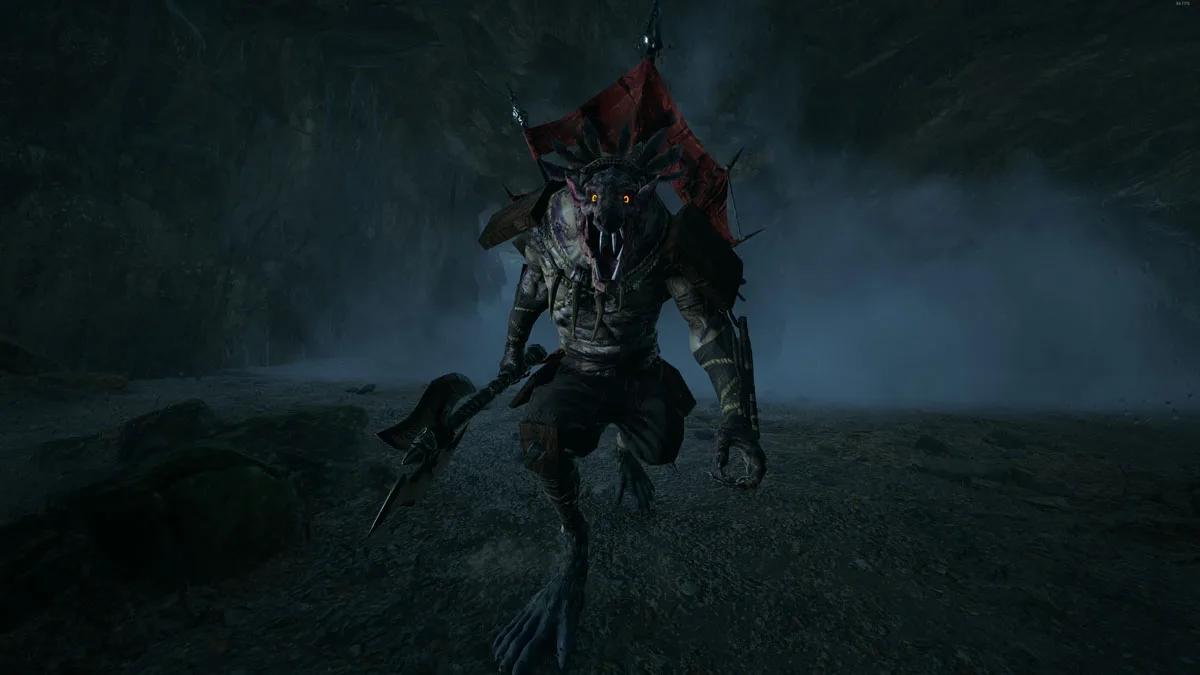
The enemy NPCs are creatively and artistically rendered, and each of them have unique attacks. Bright Memory is a first person shooter that’s capable of introducing thrills, heart-pounding excitement, and a continuing sense of sustained urgency rarely found elsewhere. It reminds us of a successful mash-up of Doom, Bulletstorm, Devil May Cry, and Dark Souls, with a strong influence from anime action movies.
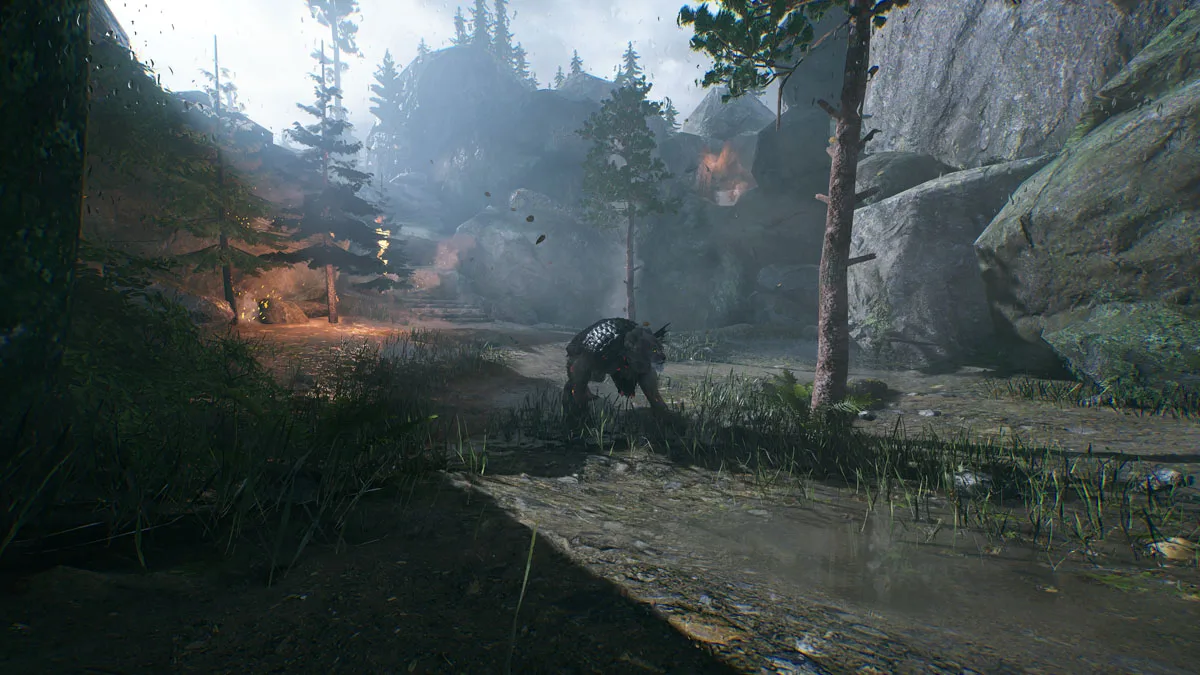
There are indoor and outdoor maps that are equally artistically designed and beautifully rendered.

The voice acting, audio, and the music are generally well-done, and the music tempo rises as the action heats up adding to the player’s excitement. Weapons sounds are very good. There are brief respites between fighting to admire the scenery or to solve an occasional puzzle. The puzzles are simplistic and forgettable, and there are weaknesses with the writing and the story, but overall, Bright Memory focuses on the intensity of the action parts of the game which are particularly well-implemented.
Sheila is alone other than having occasional short communication with the SRO HQ, and even briefer interaction with the enemy SAI operatives through cutscenes. The cutscenes are unskippable and there are thankfully only a few annoying QTEs. There are also some items hidden through the world that give XP and add a little backstory, but the primary way to gain XP to upgrade weapons and skills is by defeating enemies.
The player is awarded extra style points in a similar fashion to the Devil May Cry series. Although Bright Memory is unforgiving in that a single hit by a boss may take a huge chunk of a player’s life, Sheila will regenerate her health back to 100% if she can avoid getting hit again. Strafe and run is her best option, and it’s a weakness of the game’s mechanics since there are no health pickups; enemy NPCs drop XP and ammo when they die. Players wield a pistol with unlimited ammo, a shotgun, and an assault rifle. Ammo is plentiful and is inexplicably regenerated after boss battles without any discernible pattern, but it doesn’t take away from the action.
The Bright Memory puzzles take very little thought, but sometimes they require being proficient with platforming and jump timing. The very best thing about Bright Memory is how it brings all its action and shooter elements together with great combo attacks using upgradeable skills and abilities. Often winning boils down to emptying a clip into a boss and then quickly reloading. While reloading, the best strategy is to unleash a combo energy slash attack until the meter runs out, then empty the newly reloaded gun clip again. If you get damaged, strafe backwards or run away until the health regenerates. Rinse and repeat. But it is a lot of fun!
The simple mechanics do not take away from the excitement of the fights. Bright Memory is fun in the style of the old school shooters. Even though bosses are bullet sponges and the enemy NPC AI is rudimentary and depends on mob action, all of the elements come together into a great shooter coupled with an excellent hack and slash hybrid action experience. Since there are many choices for combo attacks, it requires using multiple key presses simultaneously that unfortunately cannot be changed from their default settings.
Bright Memory has little replayability. The only reason a player may want to play it again is to get all the sufficient XP to level up fully so as to try all of the skills and combos. It takes more than two replays to upgrade everything, and the final boss is the very definition of bullet sponge. There are some hidden secrets, but they are all easy to find. Hopefully the developer will address these nitpicks in the final game.
We originally experienced some issues with bugs that have been fully resolved by patches. Bright Memory offers the choices to launch with DX11 or DX12. DX11 also looks great although it doesn’t offer ray tracing options, and we will concentrate on DX12.
Performance Options
Here are the DX12 graphics settings that we used and changed for benchmarking – RTX On or OFF, DLSS 2.0 or FXAA. All other settings are set to their highest level at a rendering resolution of 100% for DLSS and at 100% for FXAA. Updated: Setting the in-game rendering resolution with DLSS 2.0 to 90%/75%/50% has no effect on performance or on the resolution (and the values are incorrectly stated anyway), and ‘FXAA’ is apparently really TAA although we continue to refer to it by the in-game setting.
Besides using DLSS, the other choices for antialiasing are either FXAA Normal or FXAA High. We picked FXAA High and compared its IQ (at 100%) to DLSS 2.0 (at 100% scaling) with RTX features turned On versus Off.
Ray Traced Reflections
Instead of prebaked rasterized lighting that game developers have had to use, RTX ray tracing gives superior lighting which works well with the effects that Bright Memory strives for. These RTX effects are not used consistently all through the game, but are rather used in areas that have the most visual impact. We suspect that NVIDIA provided assistance through their Indie Spotlight Game Developer Program to help the Bright Memory dev create realistic lighting effects that cannot be achieved using rasterized lighting alone, and he has added DLSS 2.0 for anti-aliasing which uses upscaling to increase performance with excellent IQ.
Bright Memory’s varied environments are a good showcase for RTX ray tracing which cast realistic reflections on reflective surfaces, increasing image quality and enhancing immersion. With ray tracing, the RTX ray-traced reflections are based on the exact geometric detail and dynamic lighting of a scene for better image quality.
RTX Off vs. RTX On Highest settings – both with High FXAA
At 4K/highest settings and with High FXAA (no DLSS) at 100% native resolution at 3840×2160, we compare ray tracing RTX Off (Slider to Right) versus RTX On (Slider to Left).
[twenty20 img1=”16935″ img2=”16936″ offset=”0.5″]
It’s obvious that RTX ray tracing adds more to the visuals of the scene just by turning it on. However, both scenes use FXAA which add blur to each image.
Bright Memory uses RTX ray-tracing which takes a significant performance hit that can be ameliorated significantly by DLSS 2.0 at 100% rendering resolution. Here are some additional screenshots comparing RTX On with DLSS 2.0 versus RTX On with High FXAA. Please be aware that these scenes cannot be compared exactly because there is a random fog element built into the game.
RTX On – Quality DLSS vs. High FXAA
The FXAA High IQ (at 100% native 3840×2160 render resolution) is used on the screenshot with the slider to right vs. DLSS 2.0 IQ (at 100%) with the slider to left.
[twenty20 img1=”16948″ img2=”16947″ offset=”0.5″ before=”FXAA High – 100% Render Resolution 4K” after=”DLSS 2.0 – 75% Render Resolution 4K”]
There are some subtle differences. However, with the camera in motion, DLSS 2.0 gives better image quality over High FXAA since the DLSS image is sharper.
Performance
Using Bright Memory’s highest settings which include RTX ray tracing plus the highest level of FXAA at 4K resolution, NVIDIA’s fastest consumer video card, the RTX 2080 Ti struggles in the mid-30s FPS. Bright Memory only runs smoothly well above 60 FPS at 1920×1080 and satisfactorily at 2560×1440. To play at the highest settings and with ray tracing on requires the use of AI super resolution or DLSS 2.0 (Deep Learning SuperSampling) which provides IQ similar to or better than FXAA or TAA but with better performance. Ray tracing provides the next generation of visuals, and coupled with DLSS, it boosts performance to be able to play at fluid frame rates.
For this performance graph, FXAA High at 100% render resolution is compared versus DLSS 2.0 also at 100% resolution.
DLSS 2.0 gains back a large percentage performance of the non-ray traced game over using FXAA instead, and in this case the minimum framerates are better. Upscaled DLSS isn’t perfect, occasionally adding some minor banding and artifacting, but overall it looks great with the camera in motion and better than the blur that FXAA adds.
We played a portion of the game in DX11 and we still enjoyed it thoroughly – the developer is a true artist – however, we missed the RTX effects that DX12/RTX provide. There is no other way to put it – ray tracing adds to a game’s visuals; and in the case of Bright Memory, it adds quite a lot even though it is not used consistently throughout the game.
Interview with the Bright Memory Developer, XianCheng Zeng
BTR was able to interview the Bright Memory Developer, Mr. XianCheng Zeng, and ask him a few questions. Here are his responses.
What games do you like to play that influenced Bright Memory?
I am a big fan of FPS games, and for Bright Memory I was inspired by many of my favorite FPS games, including Call of Duty, Battlefield, Bullet Storm, and Shadow Warrior.
Why did you create a RTX ray traced game? Can’t similar effects be achieved with rasterization?
RTX improved the quality of my game, since traditional rasterization screen performance wasn’t able to keep up with the demands of scenes in the game. RTX technology provides more players with the opportunity to experience various graphic improvements than traditional rasterization.
What is the state of the Unreal 4 engine regarding ray tracing, and how easy is it for an indie developer to use its new RTX tools?
With the current version of Unreal Engine 4, raytracing still has some performance issues and I needed some help from NVIDIA to optimize game performance. Raytracing has been integrated into a number of graphics features in Unreal 4. It gives developers the ability to adjust raytracing features easily, but developers still face many performance optimization issues when trying to enable raytracing. But I am happy to see that DLSS 2.0 integration improves the performance of their games.
Have you been able to expand your studio into a team, and do you work full time on your game now?
Yes, after finishing development on Bright Memory: Infinite, I’m considering forming a team to develop my next game. However, I have to work on Bright Memory: Infinite on my own and I have been working full-time on Bright Memory and Bright Memory: Infinite for almost a year.
What kind of assistance has NVIDIA made available to you with their Indie program?
At NVIDIA Indie program, I created the RTX technology demo for Bright Memory: Infinite and won the NVIDIA Spotlight DXR Award for the graphics quality. The demo was posted to Nvidia official YouTube account and promoted on Twitter, and Jen-Hsun Huang showed off Bright Memory: Infinite RTX demo personally at GTC-China last year.
Could your game run on AMD cards if they bring ray tracing support to their drivers?
Ray tracing in Bright Memory was written to the DXR standard. We expect any hardware or driver that supports the API to run.
In the full game, will players get to explore the floating island shown in the first scene, and will it include the areas seen in the Infinite trailer?
I’m redesigning all of the various maps for Bright Memory: Infinite. Players will not be able to explore the floating island, but it will feature even more compelling scenes and provide players with some awesome exploration opportunities.
Do you plan to add any more weapons, upgrades, or powers to Infinite? About how long can players expect it to be?
Yes, Bright Memory: Infinite includes new weapons such as grenade launchers, has more skills than Bright Memory 1.0, and players can expect more than twice the amount of gameplay time than Bright Memory 1.0.
Is there any chance that your game will eventually come to VR?
Actually, Bright Memory was initially going to feature support for VR. In 2016, VR technology was still in its infancy, so the VR features ending up being cancelled. I want to wait for more players to embrace the VR market, and then I plan to re-enter the VR realm.
What does FYQD stand for?
FYQD consists of the initials of the pin-yin letters of the studio’s Chinese name. I didn’t want the studio to have a long English name, so I decided to simplify it.
Thank-you, we wish you great success with Bright Memory Infinite and with your future games.
Conclusion
Bright Memory is a really good action game and it has brought a lot of fun to the 3 hours we played and replayed it. We are impressed by Bright Memory’s gameplay and visuals, and we are looking forward to the full game, Bright Memory Infinite, which is expected next year. Everyone who buys the game now for $9.99 will get the full game.
Bright Memory is fun right from its opening, and it pulls you into its strange world delivering epic first person battles with such impact and intensity that almost define high action gaming immersion. If you are a completionist looking to max out every skill and find every collectable, you may put 3 hours into the game. If you just play it once, you will be done within an hour.
Bright Memory deserves a “7.5/10” in our opinion as a very short action game that does what it does very well. It is hard to believe that a very small indie studio was able to pull off such an awesome effort, and we look forward to FYQD’s other games. The visuals are absolutely outstanding, and the RTX ray tracing effects add to its immersion while DLSS 2.0 improves the performance and the IQ over using FXAA High.
Next up, we are going to check out six 128GB Kingston CANVAS SDcards with speeds that vary from 100MB/s to a blazing 300MB/s.
Happy Gaming!

